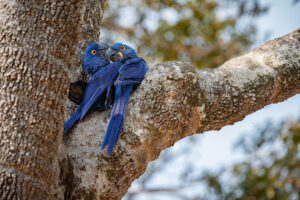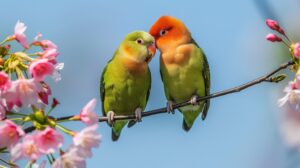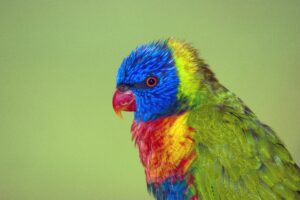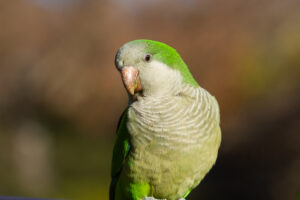Introduction
The Harlequin Macaw is one of the most breathtaking and intelligent bird companions available to avian enthusiasts today. As a hybrid of the Blue and Gold Macaw and the Green Wing Macaw, the Harlequin Macaw combines the most striking physical characteristics and personality traits of both parent species. However, owning this magnificent bird comes with significant responsibilities and potential pitfalls that many first-time owners don’t anticipate.
Whether you’re considering a Harlequin Macaw for sale, researching Harlequin Macaw prices, or already sharing your home with one of these colorful companions, understanding the common mistakes can mean the difference between a thriving, happy bird and one that develops serious physical and behavioral problems.
In this comprehensive guide, we’ll explore the four most dangerous mistakes Harlequin Macaw owners make and provide expert advice on how to avoid them. From diet and housing to socialization and mental stimulation, proper Harlequin Macaw care requires knowledge, dedication, and consistency. With a potential Harlequin Macaw lifespan of 50+ years, the decisions you make today will impact your bird’s wellbeing for decades to come.*
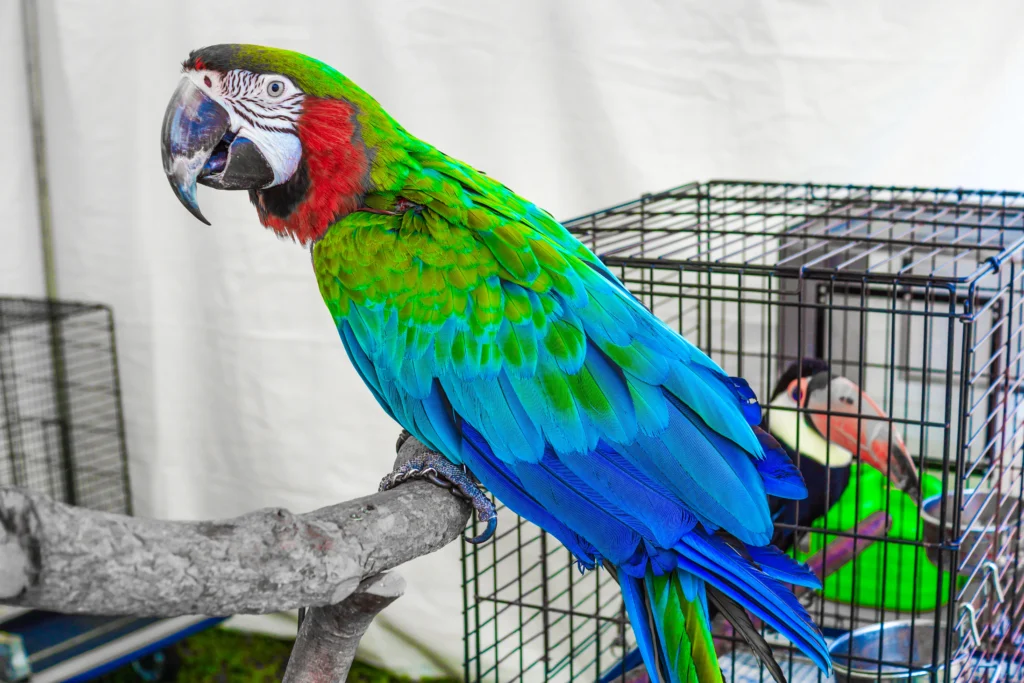
Understanding the Harlequin Macaw: Background and Characteristics
Before diving into common mistakes, let’s first understand what makes the Harlequin Macaw unique among pet birds.
What is a Harlequin Macaw?
The Harlequin Macaw is not a naturally occurring species but rather a first-generation hybrid resulting from breeding a Green Wing Macaw (Ara chloropterus) with a Blue and Gold Macaw (Ara ararauna). This Harlequin Macaw hybrid combines the striking colors of both parent species, resulting in a spectacular display of red, gold, green, and blue plumage that makes them immediately recognizable.
Harlequin Macaw Size and Physical Characteristics
The Harlequin Macaw size is impressive, typically measuring between 35-40 inches from beak to tail tip, making them one of the larger macaw varieties. They generally weigh between 2-3 pounds when fully grown. Their wingspan can reach up to 49 inches, requiring ample space for stretching and flying.
The Harlequin Macaw colors are their most distinctive feature. They typically display:
- A red-orange to burgundy chest that transitions to yellow
- Green wings with blue flight feathers
- A facial pattern that often shows the white face of the Blue and Gold parent with red accents from the Green Wing parent
- A powerful beak that transitions from black to gray
These striking Harlequin Macaw characteristics make them visually stunning, but potential owners should understand that appearance shouldn’t be the primary reason for choosing this species.
Harlequin Macaw Temperament and Personality
The Harlequin Macaw personality is often described as the perfect middle ground between its parent species. They tend to inherit:
- The playfulness and curious nature of the Blue and Gold Macaw
- The gentler, more docile aspects of the Green Wing Macaw
- High intelligence that facilitates excellent Harlequin Macaw talking ability
- Strong bonding tendencies toward their human caregivers
While individual Harlequin Macaw behavior varies, many owners report that they tend to be less prone to the mood swings sometimes associated with pure Green Wing Macaws while maintaining the outgoing nature of Blue and Gold Macaws.
Harlequin Macaw vs Blue and Gold Macaw: Key Differences
When comparing the Harlequin Macaw vs Blue and Gold Macaw, several differences stand out:
- Harlequin Macaws typically display more red in their plumage
- They often grow slightly larger than pure Blue and Golds
- Their temperament may be somewhat calmer and less excitable
- Their vocalizations often combine qualities from both parent species
Harlequin Macaw vs Green Wing Macaw: Notable Distinctions
In the Harlequin Macaw vs Green Wing Macaw comparison:
- Harlequins typically show more yellow in their chest and face
- They may be more outgoing and less reserved than pure Green Wings
- Their noise level may be slightly lower than a Green Wing’s powerful calls
- They often display more playfulness and curiosity
Now that we understand what makes the Harlequin Macaw unique, let’s examine the four most dangerous mistakes owners make and how to avoid them.
Mistake #1: Inadequate Housing and Cage Requirements
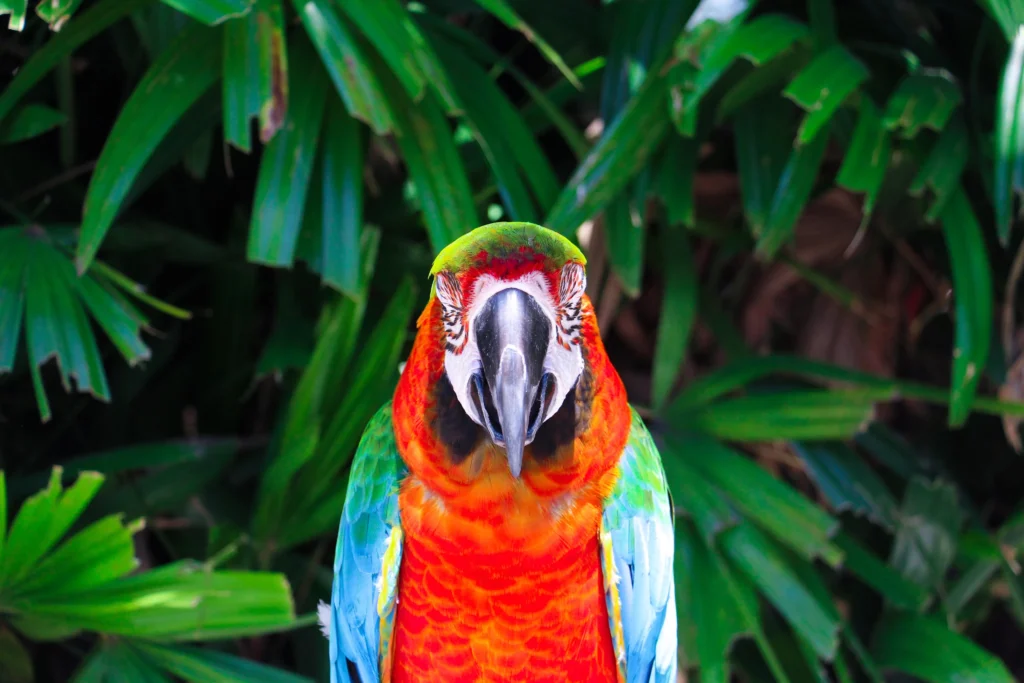
One of the most serious and common mistakes Harlequin Macaw owners make involves improper housing. These magnificent birds require significantly more space than many owners initially provide.
The Dangers of Insufficient Cage Size
The Harlequin Macaw cage size requirements are substantial due to their large physical dimensions and active nature. An inadequate cage can lead to:
- Physical health problems including muscle atrophy and foot deformities
- Behavioral issues such as increased screaming, aggression, and feather plucking
- Psychological distress from inability to move naturally or express normal behaviors
- Increased risk of obesity due to limited movement
Dr. James Morrisey, DVM, an avian specialist at the Cornell University Veterinary Medical Center, explains: “Macaws confined to cages that are too small frequently develop both physical and psychological problems. Their wing and leg muscles may atrophy, and the frustration often manifests as destructive or self-harming behaviors.”
Proper Harlequin Macaw Cage Requirements
For a Harlequin Macaw, the minimum cage dimensions should be:
- Width: At least 36 inches (preferably 48+ inches)
- Depth: At least 36 inches
- Height: At least 60 inches
- Bar spacing: 1-1.5 inches
The cage should be constructed from durable, bird-safe metals like stainless steel or powder-coated materials that can withstand the powerful Harlequin Macaw beak. Avoid cages with toxic metals or paints.
Beyond the Cage: Creating a Harlequin Macaw-Friendly Environment
Your Harlequin Macaw should spend significant time outside their cage each day in a bird-proofed area. This environment should include:
- Multiple perches of varying diameters and textures to maintain foot health
- A dedicated play stand with toys and foraging opportunities
- Safe areas to fly and exercise when possible
- Bird-safe plants and natural materials that encourage exploration
Jessica Adams, an experienced Harlequin Macaw breeder with over 20 years of experience in Harlequin Macaw breeding, notes: “Many owners fail to realize that the cage is just the beginning. These birds need a variety of spaces to explore and interact with throughout your home.”
Mistake #2: Nutritional Deficiencies and Diet Misconceptions
The second critical mistake involves the Harlequin Macaw diet. Many owners rely too heavily on seed-based diets or fail to provide adequate variety, leading to serious health implications.
The Dangers of Poor Nutrition for Harlequin Macaws
Improper diet can cause:
- Vitamin A deficiency, leading to respiratory issues and poor feather quality
- Calcium deficiencies resulting in weakened bones and egg-binding in females
- Obesity from high-fat seed diets
- Liver disease from excess fat consumption
- Shortened lifespan and reduced quality of life
The Harlequin-Macaw lifespan potentially extends beyond 50 years with proper care, but poor nutrition can dramatically reduce this to 15-20 years or less.
Creating an Optimal Harlequin-Macaw Diet
A proper Harlequin-Macaw diet should consist of:
1. High-Quality Pellets (50-60% of diet)
- Choose formulations specifically designed for large macaws
- Look for natural colorings rather than artificial dyes
- Select brands with scientifically balanced nutrition
2. Fresh Vegetables (20-30% of diet)
- Dark leafy greens (kale, swiss chard, spinach in moderation)
- Colorful vegetables (carrots, bell peppers, squash)
- Cruciferous vegetables (broccoli, cauliflower)
3. Limited Fruits (10-15% of diet)
- Berries (blueberries, strawberries)
- Tropical fruits (papaya, mango)
- Apples, pears, and other domestic fruits
4. Nuts and Seeds (5-10% of diet)
- Walnuts, almonds, hazelnuts
- Brazil nuts (excellent source of selenium)
- Pumpkin and sunflower seeds as occasional treats
5. Protein Sources (occasional)
- Cooked legumes (beans, lentils)
- Small amounts of cooked egg
- Cooked chicken (unseasoned)
Dr. Laura Barfield, avian nutritionist at the Exotic Bird Wellness Center, emphasizes: “The Harlequin-Macaw requires a diverse diet that mimics the varied nutritional intake they would experience in the wild. A diet consisting primarily of seeds or even just pellets is insufficient for their complex nutritional needs.”
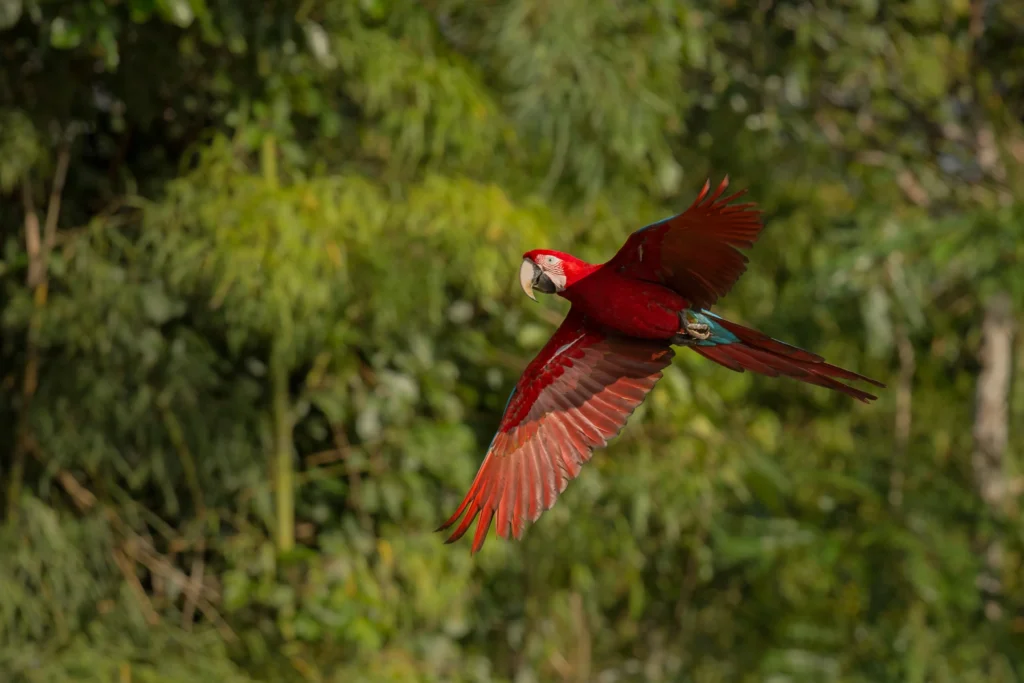
Dangerous Foods to Avoid
Never feed your Harlequin-Macaw:
- Avocado (contains persin, which is toxic to birds)
- Chocolate (contains theobromine)
- Caffeine in any form
- Alcohol
- Salty or fatty human foods
- Onions and garlic
- Apple seeds and fruit pits (contain cyanide compounds)
For more detailed information on safe and unsafe foods, visit our complete Harlequin Macaw diet guide.
Mistake #3: Insufficient Mental Stimulation and Socialization
The third critical mistake involves failing to address the complex psychological and social needs of the Harlequin-Macaw. These highly intelligent birds require substantial mental stimulation and social interaction to prevent behavioral problems.
Understanding Harlequin-Macaw Intelligence
The Harlequin-Macaw has cognitive abilities comparable to a 3-5 year old human child. This remarkable intelligence means they require:
- Regular problem-solving opportunities
- Variety in their environment and routines
- Learning experiences through Harlequin-Macaw training
- Complex toys that challenge their minds
Dr. Irene Pepperberg, renowned for her work with avian cognition, notes: “Large parrots like macaws have demonstrated the ability to understand concepts like shape, color, number, and even absence. Without opportunities to use these cognitive abilities, they often develop destructive behaviors.”
The Dangers of Isolation and Boredom
Harlequin-Macaws that don’t receive adequate stimulation may develop:
- Excessive screaming and problematic Harlequin-Macaw noise levels
- Feather plucking and self-mutilation
- Aggressive Harlequin-Macaw behavior toward owners or other pets
- Destructive tendencies toward furniture and household items
- Stereotypic behaviors (repetitive movements with no purpose)
- Depression and lethargy
Effective Mental Stimulation Strategies
To provide proper mental enrichment:
1. Rotate Toys Regularly
- Provide foraging toys that require problem-solving to access treats
- Include destructible toys that satisfy natural chewing instincts
- Offer puzzle toys with hidden compartments
- Create DIY toys that present new challenges
2. Implement Training Sessions
- Use positive reinforcement techniques
- Teach practical commands like “step up” and “stay”
- Progress to more complex tricks and behaviors
- Consider target training for mental exercise
3. Provide Environmental Enrichment
- Create foraging opportunities by hiding treats around their play area
- Introduce new textures, sounds, and safe objects to explore
- Consider controlled outdoor time in a secure carrier or harness
- Provide opportunities to shred and manipulate natural materials
Social Needs and Interaction Requirements
The Harlequin-Macaw pet requires significant social interaction. In the wild: macaws are highly social creatures that live in flocks, and your pet Harlequin needs to view you as their flock.
Daily Interaction Requirements:
- Minimum 2-3 hours of direct interaction outside the cage
- Regular conversation to stimulate their talking ability
- Physical contact through gentle scratches (when the bird is receptive)
- Inclusion in family activities when appropriate
Carlos Sanchez, a certified parrot behavioral consultant specializing in macaws, explains: “The Harlequin Macaw is a social species that forms deep bonds. When we bring them into our homes, we’re asking them to form their primary bond with humans instead of other macaws. This creates an obligation to fulfill their significant social needs.”
For more information on enrichment activities and socialization techniques, check out our Harlequin Macaw training and enrichment guide.
Mistake #4: Neglecting Regular Veterinary Care and Health Monitoring
The fourth dangerous mistake involves inadequate attention to the Harlequin Macaw’s specialized healthcare needs. Many owners underestimate the importance of preventative care and fail to recognize early warning signs of illness.
The Critical Importance of Avian Veterinary Care
Unlike dogs and cats, birds like the Harlequin-Macaw have evolved to hide symptoms of illness as a survival mechanism. By the time obvious symptoms appear, the condition is often advanced. This makes regular preventative care essential.
Dr. Elizabeth Warren, board-certified avian veterinarian, explains: “Birds are masters at concealing illness. By the time an owner notices something wrong, the bird may have been sick for days or weeks. This is why preventative care is so crucial for species like the Harlequin-Macaw.”
Essential Healthcare Requirements
1. Regular Veterinary Check-ups
- Initial exam immediately after adoption or purchase
- Baseline health assessment including blood work
- Annual wellness exams (semi-annual for birds over 15 years)
- Relationship with an avian-certified veterinarian
2. Disease Prevention Measures
- Strategic testing for common avian diseases
- Appropriate quarantine procedures for new birds
- Safe household environment free of toxins
- Proper nutrition to support immune function
3. Weight and Physical Monitoring
- Regular weighing (ideally weekly) to detect subtle changes
- Monitoring droppings for changes in color, consistency, or volume
- Checking feather quality and new growth
- Observing breathing patterns and exercise tolerance
Common Health Concerns in Harlequin-Macaws
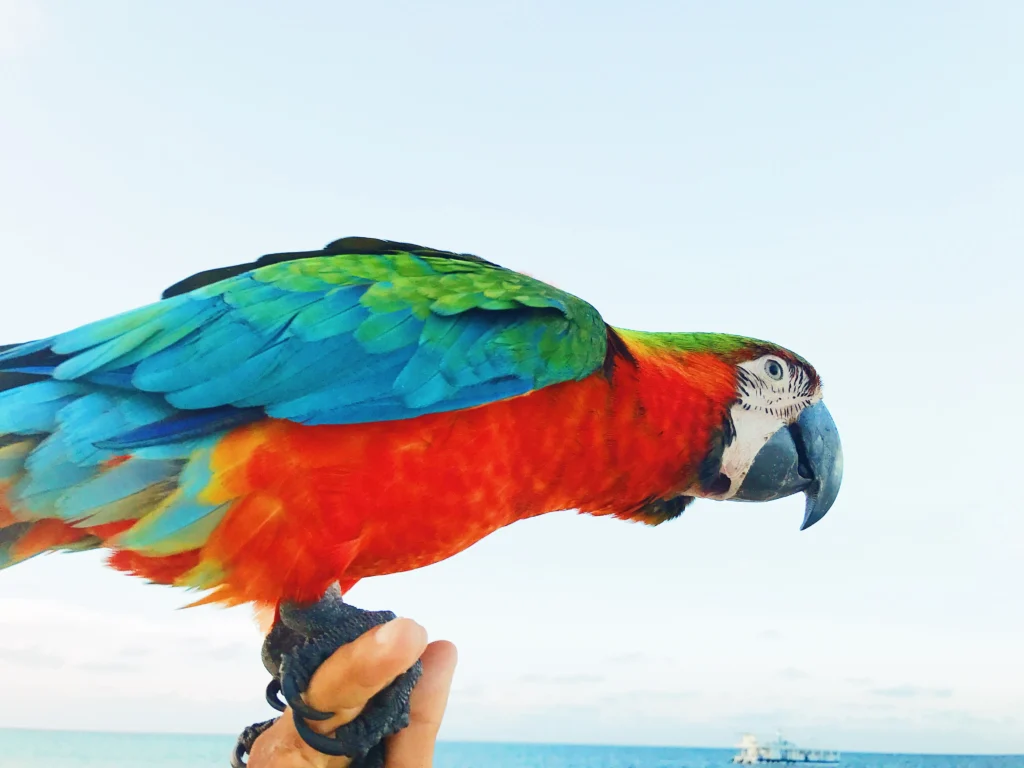
Harlequin Macaws are susceptible to several health issues that require vigilance:
1. Respiratory Conditions
- Aspergillosis (fungal infection)
- Bacterial pneumonia
- Air sac inflammation
2. Nutritional Diseases
- Hypovitaminosis A (vitamin A deficiency)
- Hypocalcemia (calcium deficiency)
- Fatty liver disease
3. Behavioral Health Concerns
- Feather destructive behaviors
- Self-mutilation
- Stereotypic movements
4. Other Medical Concerns
- Psittacine Beak and Feather Disease (PBFD)
- Proventricular Dilatation Disease (PDD)
- Papillomas and other tumors
- Gout and kidney disease
Regular monitoring and prompt veterinary attention at the first sign of illness can make the difference between successful treatment and serious complications.
For a detailed checklist of health monitoring tips and warning signs, visit our Harlequin Macaw health guide.
Making the Decision: Is a Harlequin-Macaw Right for You?
Before considering Harlequin-Macaw adoption or looking at Harlequin-Macaw for sale advertisements, potential owners should honestly assess whether they can provide for these birds’ extensive needs.
The True Cost of Harlequin-Macaw Ownership
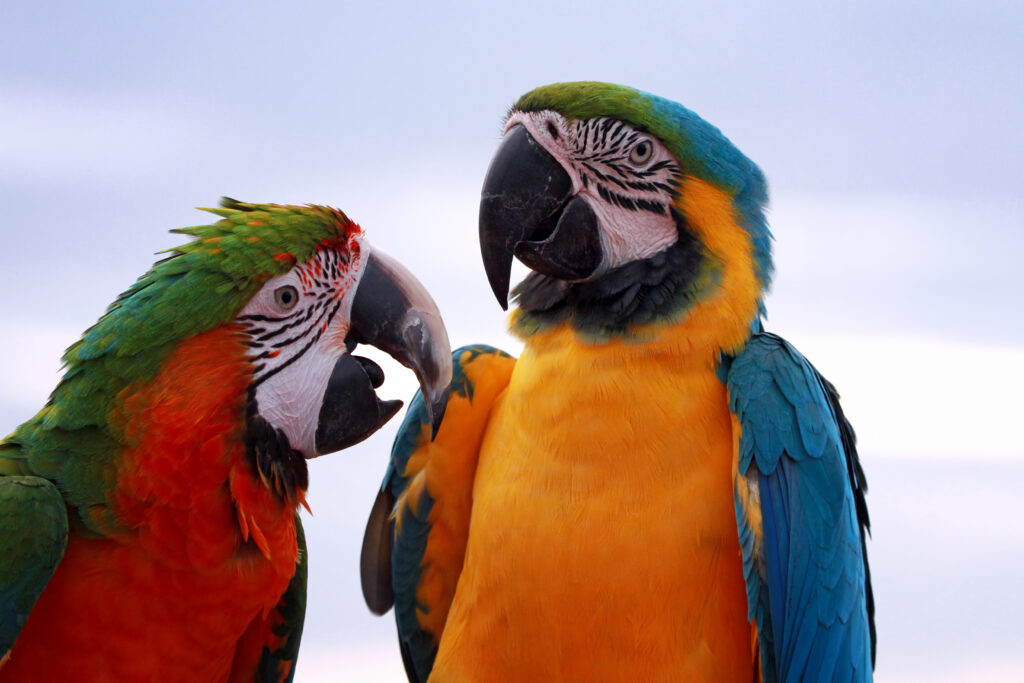
The initial Harlequin Macaw price or Harlequin-Macaw cost is just the beginning of a significant financial commitment:
Initial Expenses:
- Harlequin Macaw purchase: $3,500-$8,000 depending on age, color intensity, and breeder reputation
- Appropriate cage: $800-$2,000
- Initial veterinary examination: $200-$500
- Initial supplies (perches, toys, food bowls): $300-$500
Annual Expenses:
- Quality food: $1,000-$1,500
- Toy replacement: $500-$1,000
- Regular veterinary care: $300-$800
- Emergency fund recommendations: $1,500-$3,000
Time Commitment Considerations
Beyond financial resources, potential owners must consider the substantial time requirements:
- 2-3 hours minimum of direct interaction daily
- 1 hour for feeding, cleaning, and maintenance
- Regular training sessions
- Socialization activities
- Long-term commitment spanning decades
Housing and Lifestyle Factors
The Harlequin Macaw presents several lifestyle challenges:
- Significant noise potential (the Harlequin Macaw noise level can reach 105 decibels)
- Destructive capabilities toward furniture and home fixtures
- Substantial mess from food, feathers, and powder down
- Travel complications due to their care requirements
- Potential issues with neighbors in apartment settings
Alternative Options to Consider
If you’re uncertain about meeting all these requirements, consider:
- Volunteering at a parrot rescue to gain experience
- Fostering a bird temporarily
- Choosing a less demanding species as a first bird
- Supporting conservation efforts for wild macaws instead
For those who proceed with ownership, proper information is crucial. Join forums, connect with experienced Harlequin Macaw owners, and continue educating yourself about these magnificent birds.
Conclusion: Creating a Thriving Environment for Your Harlequin Macaw
The Harlequin Macaw is an extraordinary companion animal with the potential to bring joy, companionship, and wonder to your life for many decades. By avoiding the four dangerous mistakes we’ve discussed—inadequate housing, improper nutrition, insufficient mental stimulation, and neglected healthcare—you’ll build the foundation for a healthy, well-adjusted bird.
Remember that the colorful Harlequin Macaw combines the best traits of both parent species, requiring a commitment level that matches their impressive presence. Their remarkable Harlequin Macaw talking ability, playful Harlequin Macaw personality, and striking Harlequin Macaw colors come with the responsibility to provide exceptional care throughout their long Harlequin Macaw lifespan.
Whether you’re just beginning your research or already sharing your life with one of these incredible birds, continuing education is essential. Explore our other in-depth articles on specific aspects of Harlequin Macaw care, join reputable online communities, and connect with experienced owners who can provide guidance based on practical experience.
By committing to excellence in Harlequin Macaw care, you’re not just avoiding dangerous mistakes—you’re creating the conditions for a thriving partnership that will enrich both your lives for decades to come.
Resources and Further Reading
For more information on Harlequin Macaw care and related topics, explore these valuable resources:
- Complete Guide to Harlequin Macaw Diet and Nutrition
- Harlequin Macaw Training Techniques for Beginners
- Setting Up the Ideal Harlequin Macaw Habitat
- Health Monitoring for Your Harlequin Macaw
- Understanding Macaw Body Language and Communication
External Resources:
- Avian Veterinary Association Directory
- World Parrot Trust Conservation Efforts
- Lafeber’s Veterinary Medical Information
- Bird Talk Magazine Online Archive
- Cornell University Ornithology Resources
This article about the Harlequin Macaw was thoroughly researched and written by the expert team at PetsPump. While we strive to provide the most accurate and up-to-date information about Harlequin Macaw care, temperament, and characteristics, we recommend consulting with an avian veterinarian for personalized advice regarding your specific pet. Last updated: May 2025.



